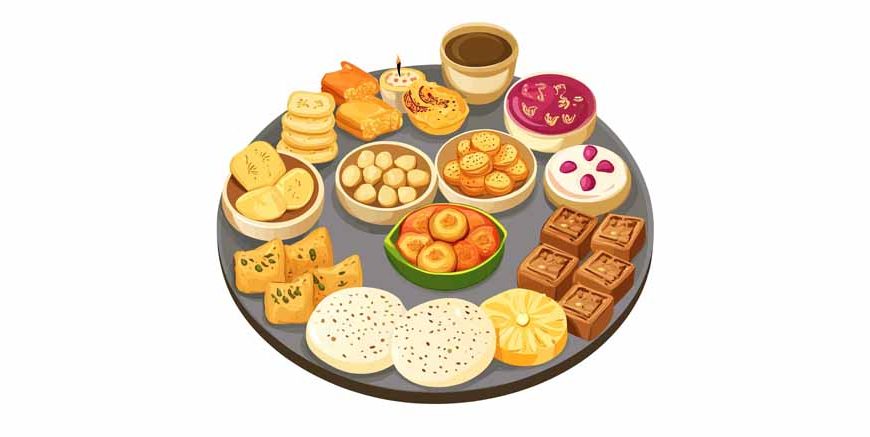With the onset of the festive season with Ganesh Chaturthi, one can feel the change in the air. After the joyous celebration of Ganapati Bappa, it’s time to honour Goddess Durga during Navratri. Often celebrated in September-October, this nine-day festival honouring the goddess and her nine avatars brings spiritual awakening alongside the cherished Navratri fasting tradition with its meaningful guidelines. Whether you are new to fasting or looking to deepen your practice, we’ll share Navratri fasting rules, health benefits, delicious recipes, and more to help your family observe these sacred days with joy and devotion.
5 Navratri Fasting Rules To Swear By
Although different people follow different Navratri fasting rules, there are some general principles or as everyone calls it, ‘Navratri Upvas ke Niyam,’ that have stood the test of time. These rules aim at keeping the mind and body energised while performing spiritual practices. So here are some Navratri fasting rules you can follow this festive season:
Avoid Grains and Pulses
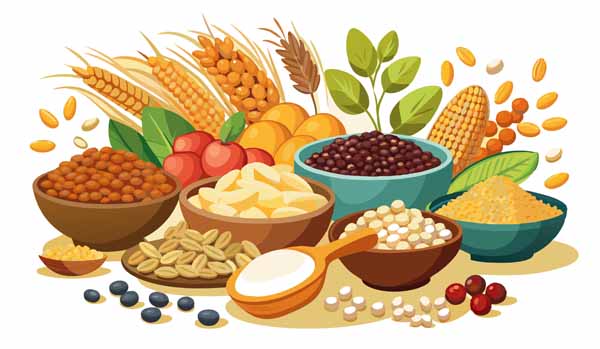
Grains and pulses like wheat, rice, millets, lentils, chickpea, beans, peas, and others should not be consumed during Navratri. Instead, they eat substitutes like buckwheat flour, water chestnut flour, and rajgira.
No Meat or Eggs Allowed

Non-vegetarian food items are strictly prohibited during Navratri fasts. Meat, eggs, even onions and garlic, known as ‘tamasic’ foods, should also be avoided, as they can increase anger and restlessness.
Rock Salt Instead of Table Salt
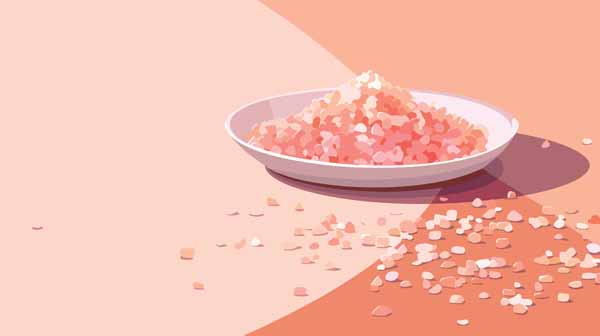
One of the Navratri upvas ke niyam is to replace table salt with rock salt or sendha namak, which is considered pure and unrefined, making it ideal for fasting.
Have Your Last Meal After Sandhya Aarti
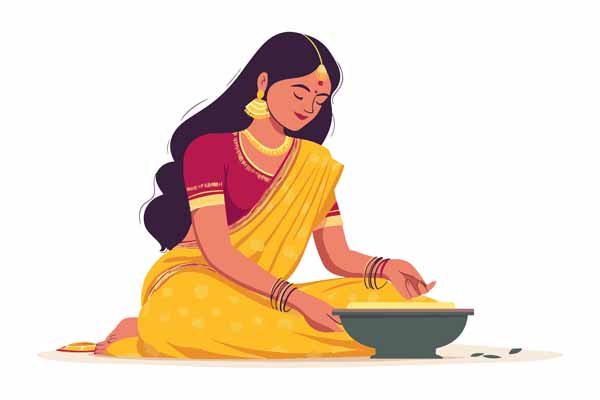
If you are observing a fast during Navratri, it’s best to avoid consuming a complete meal or your final meal of the day before the Sandhya Aarti or sunset. This helps maintain the spiritual rhythm of the fast.
Avoid Packaged Fruit Juices
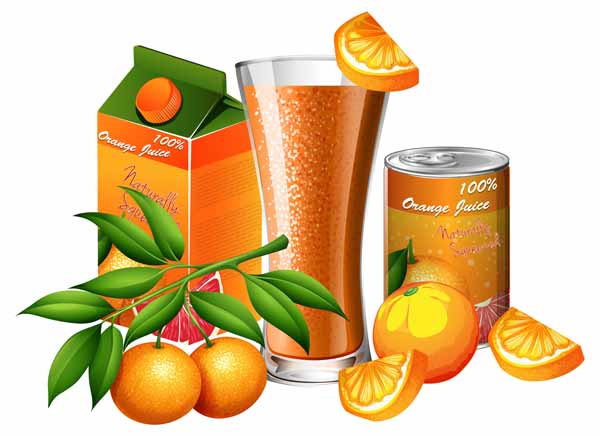
Steer clear of packaged fruit juices, as they often contain added salt and preservatives that can interfere with the purity and health benefits of fasting.
Knowing these Navratri fasting rules helps you plan your meals and stay in sync with the spiritual core of the event.
Also Read: History & Significance of 9 Days Of Navratri Festival
Do’s and Don’ts to Keep in Mind During Navrati Fasting
Besides the Navratri fasting rules, there are a few dos and don’ts that you need to keep in mind during the 9 days of the fast. Here they are:
Dos During Navratri Fast
- Don’t skip meals: Eat small portions of nuts or fruits every 2–3 hours to maintain energy.
- Follow the Navratri diet to the T: Include alkaline foods like fruits, nuts, dairy products (milk, curd, butter), and special flours such as buckwheat (Kuttu ka Atta), water chestnut flour (Singhare ka Atta), or amaranth flour (Rajgira ka Atta).
- Stay hydrated: Drink enough water, buttermilk, milk, and fresh fruit juices (not store-bought ones) throughout the day.
- Eat at regular intervals: Having light meals or drinks frequently helps avoid dizziness, weakness, and fatigue. Always maintain the right balance of sugar and salt.
Don’ts During Navratri Fasting
- Avoid onion, garlic, and heavy spices in meals. Additionally, avoid heat-inducing oils, such as mustard or sesame oil.
- Don’t overeat before sunset or after Sandhya Aarti, as it can cause discomfort during fasting.
- Avoid packaged juices or processed foods, as they may contain excess sugar, salt, and preservatives.
Navratri Fasting Rules: When to Break Fast and What to Eat
When To Break Navratri Fast
Timing for breaking fast is very important. Usually, you break your fast on the tenth day, known as Vijayadashami or Dussehra. Day 10 marks the victory over evil forces by the power of good. Some people may observe fasts for all nine days, whereas others might do it just on the first & last day of Navaratri. However long you fast, breaking it with sattvic food like fruits, light soups, or kheer is essential. Heavy or fried foods should be avoided immediately after a fast, as the stomach may take time to adjust.
Knowing when to break the Navratri fast is equally important as following all those fasting regulations. It signifies the end point of one’s spiritual practice while still keeping up with the spirit of the festival throughout the rest of life.
Also Read: Navratri Decoration Ideas
What To Eat in Navratri Fast
Selecting the right kind of food during Navratri fasts becomes necessary to maintain energy levels and provide adequate nutrition. So, what to eat in Navratri fasts, which are traditional yet nourishing?
- Sabudana (Tapioca Pearls) khichdi is a popular dish typically served during fasting periods. It’s light, easy to digest, and full all at once. The addition of peanuts, cumin seeds, and rock salt creates the ideal balance of flavour and nutrients.
- Fruits with milk, such as fresh bananas, apples, and papayas, serve as great snack options while observing these fasts. Mix them up with milk/yoghurt, thereby increasing the protein content within the diet and hydration level.
- Toasted Makhana (Fox Nuts) sprinkled with rock salt for a crunchy and healthful snack throughout the day.
- Sweet potatoes are high in fibre and carbs, which provide energy, making them ideal for fasting meals.
- Puris or Rotis made of Rajgira Flour.
Benefits of Navratri Fasting
The benefits of Navratri fasting are immense. Fasting during Navratri is not only an act done out of religion but also provides many physical and mental health benefits. Let us look at some of them:
Detoxification
Navratri fast involves taking natural detoxifiers known as sattvic foods. By avoiding processed foods, caffeine, and non-vegetarian meals, you allow your system to eliminate toxins and reset itself.
Better Digestion
The digestive tract gets relieved when we take light meals that can be easily broken down, like those eaten during Navratri. This is because such diets comprise fresh fruits, vegetables and nuts which provide fibres plus other essential nutrients without burdening the digestion process.
Weight Control
Weight loss is among the advantages associated with fasting over the Navaratri period due to a reduction in calories coupled with intake highly rich in elements required by body systems.
Mental Clarity
Clarity of thought becomes heightened through abstinence from some types of food substances, thereby giving the mind the opportunity for rest while decongesting it. Many individuals claim to experience increased emotional stability, along with spiritual consciousness, after observing fasts set aside during Navratri.
Discipline and Self-Control
Another thing learned from observing fasts set aside during Navarathri involves self-discipline, where one must follow strict dietary rules and decide the appropriate time for breaking them; this way, people gain a better understanding of themselves, both physically and mentally.
7 Navratri Fast Food Recipes
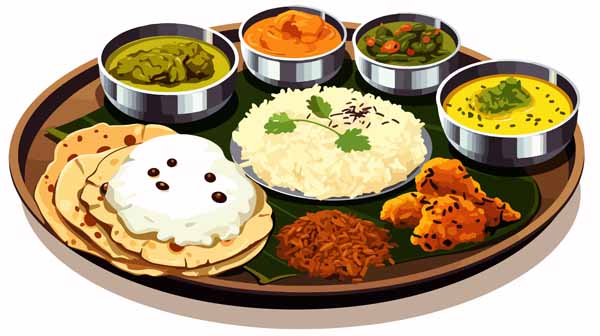
If you are looking for fast Navratri fasting recipes, we have got you covered. Here are some popular Navratri fast food recipes that you can make in minutes.
Sabudana Khichdi
This is a light but filling meal made using soaked tapioca pearls, peanuts, green chillies and sendha namak (rock salt). It can be taken for lunch as well as dinner during fasting periods.
Ingredients:
- 1 cup sabudana (soaked)
- 2 tbsp roasted peanuts (crushed)
- 1 tsp cumin seeds
- Rock salt to taste
- Ghee for cooking
Method:
Heat ghee in a pan and let it splutter the cumin seeds. Add soaked sabudana & cook on low flame. Mix crushed peanuts with salt, and cook a few minutes more – khichdi ready!
Also Read: Fun Dussehra Activities for Kids
Kuttu Ke Pakode (Buckwheat Flour Fritters)
These crispy pakoras are loved by all during festivals like Navratri.
Ingredients:
- 1 cup buckwheat flour
- 1 boiled potato (mashed)
- 1 tsp cumin seeds
- Rock salt to taste
- Ghee for frying
Method:
Mix buckwheat flour mashed potatoes, cumin seeds and sendha namak to make a thick batter consistency; deep fry spoonfuls till a crisp golden brown colour is obtained.
Makhana Kheer
A delicious sweet dish which can be eaten at the end of your fast meal or used as an offering in temples.
Ingredients:
- 1 cup makhana (roasted)
- 1 litre milk
- 2 tbsp sugar
- Cardamom powder and nuts for garnish
Method:
Boil the milk and add makhana, let it cook till the milk reduces in volume and becomes thicker; sweetened with sugar cardamom powder nuts may be used as topping. Serve warm.
Aloo Ki Kadhi (Potato Curry with Singhare ka Atta)
A light, wholesome curry that blends the earthy taste of potatoes with the richness of singhare ka atta and a hint of spice.
Ingredients:
- ½ kg potatoes (boiled, peeled & mashed)
- 2 tsp rock salt
- ¼ tsp chilli powder
- ½ cup singhare ka atta (water chestnut flour)
- Oil for deep frying
- ½ cup sour yoghurt
- 1 sprig of curry leaves
- ½ tsp cumin seeds
- 2 whole red chillies
- 1 tbsp ginger, finely chopped
- ½ tsp coriander powder
- 4 cups water
- Fresh coriander leaves for garnish
Method:
- Mix mashed potatoes, half the salt, chilli powder, and singhare ka atta to form a thick batter.
- Set aside ¼ of this mixture and use the rest to make pakoras.
- Heat oil, drop spoonfuls of the batter, and fry until golden. Drain on absorbent paper.
- To the reserved mixture, add yoghurt and water to make a smooth curry base.
- In a pan, heat 2 tbsp oil. Add curry leaves, cumin seeds, and red chillies. Sauté till aromatic.
- Add ginger, then pour in the yoghurt mixture. Season with salt and coriander powder. Simmer on low flame, stirring until slightly thick.
- Add pakoras, cook for a few minutes, and garnish with fresh coriander. Serve hot.
Banana Walnut Lassi
A cooling, creamy delight that doubles up as both a drink and a quick energy boost during fasting.
Ingredients:
- 1 cup low-fat yoghurt
- ½ ripe banana
- 3–4 walnuts (or other nuts like almonds, hazelnuts, pine nuts)
- 1 tsp flax and sesame seeds (mixed)
- 1–2 tsp honey
Method:
Blend yoghurt, banana, walnuts, flax seeds, sesame seeds, and honey until smooth and creamy. Pour into a tall glass and top with chopped walnuts for garnish, and serve chilled for a refreshing fasting drink.
Vratwale Khatte Meethe Aloo
Tangy, mildly sweet, and absolutely irresistible — these vrat-special potatoes are cooked with lemon juice and spices, making them a comforting side dish.
Ingredients:
- ½ kg potatoes (parboiled & peeled, chopped)
- ¼ cup ghee (clarified butter)
- 1 tsp cumin seeds
- 2 tsp rock salt
- ½ tsp chilli powder
- 2 tbsp sugar
- 2 tbsp lemon juice
- 1 tbsp tamarind paste (optional)
Method:
- Heat ghee in a pan, add cumin seeds, and let them splutter.
- Add potatoes and stir-fry until they turn golden.
- Sprinkle salt, chilli powder, and sugar. Mix well.
- Turn off the heat, add lemon juice, and stir.
- Serve warm as a tangy-sweet vrat delicacy.
Kheere Ke Pakode
Crispy on the outside, soft on the inside — these cucumber fritters made with singhare ka atta are a festive favourite.
Ingredients:
- 1 cup singhare ka atta
- 2 tsp rock salt
- ½ tsp chilli powder
- ½ tsp coriander powder
- 1 tbsp green chillies (finely chopped)
- 2 large cucumbers (sliced)
- Water (to make batter)
- Oil for deep frying
Method:
- In a bowl, mix singhare ka atta, rock salt, coriander powder, chilli powder, and green chillies. Add water to form a thick batter.
- Heat oil for frying.
- Dip cucumber slices into the batter and fry until golden brown.
- Remove and place on absorbent paper to drain excess oil.
- Serve hot and crisp with chutney of your choice.
Conclusion
Navratri fasting is a beautiful combination of spiritualism, discipline, and self-care. By observing the Navratri fasting rules, you can ensure an enriching and nourishing fast. It’s more than just not eating; it is about taking care of oneself as a whole.
Consider this Navratri as an occasion to embrace fasting for holistic health – both physical and mental well-being. Whether you want to detoxify your body system, clear your mind or improve your spiritual connection with yourself, many benefits come with observing fasts during Navratri.
For more such blogs on your child’s preschool admission, learning, and development, visit EuroKids Blogs. And don’t forget to visit EuroKids Preschools for the first step in your child’s learning journey.
Related Blogs:
- Dussehra Celebrations Across Indian States: Dussehra, also known as Vijayadashami, is celebrated with unique traditions across India. In this blog, we will closely look at how Dusshera is celebrated across the country.
- Why Do We Perform Ganesh Visarjan? Ganesh Visarjan marks the conclusion of Ganesh Chaturthi, symbolising the cycle of birth, life, and rebirth. In this blog, we will answer the question, “Why do we perform Ganesh Visarjan?”
- Teacher’s Day Speech In English For Kids: Teacher’s Day, celebrated on 5th September in India, honours Dr. Sarvepalli Radhakrishnan, a great teacher and philosopher. A short and simple speech for kids can include greetings to teachers, their role in shaping our future, and a heartfelt thank-you. This article features teachers’ speeches that your little ones can recite in their school assembly.
- Significance And Facts of Teacher’s Day: Teacher’s Day is not just a celebration but a tribute to the guiding lights of our lives. It highlights the importance of teachers in nurturing knowledge, values, and character.





